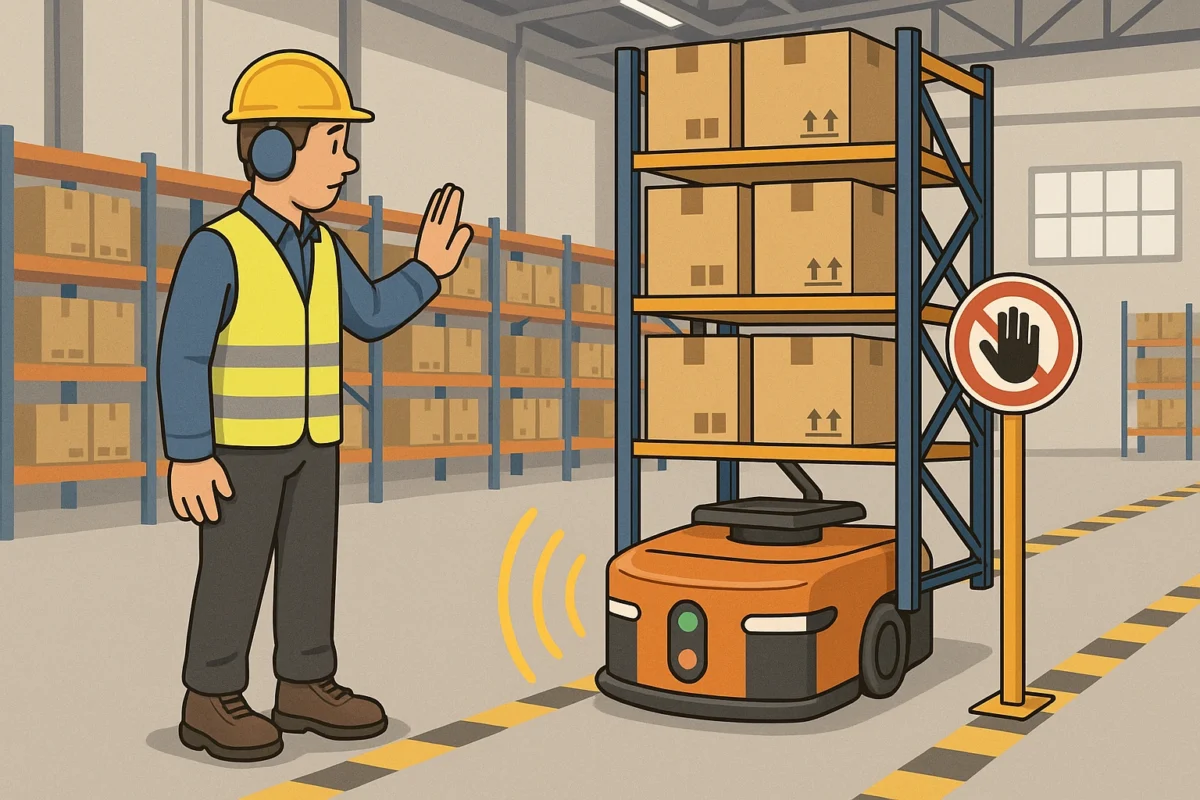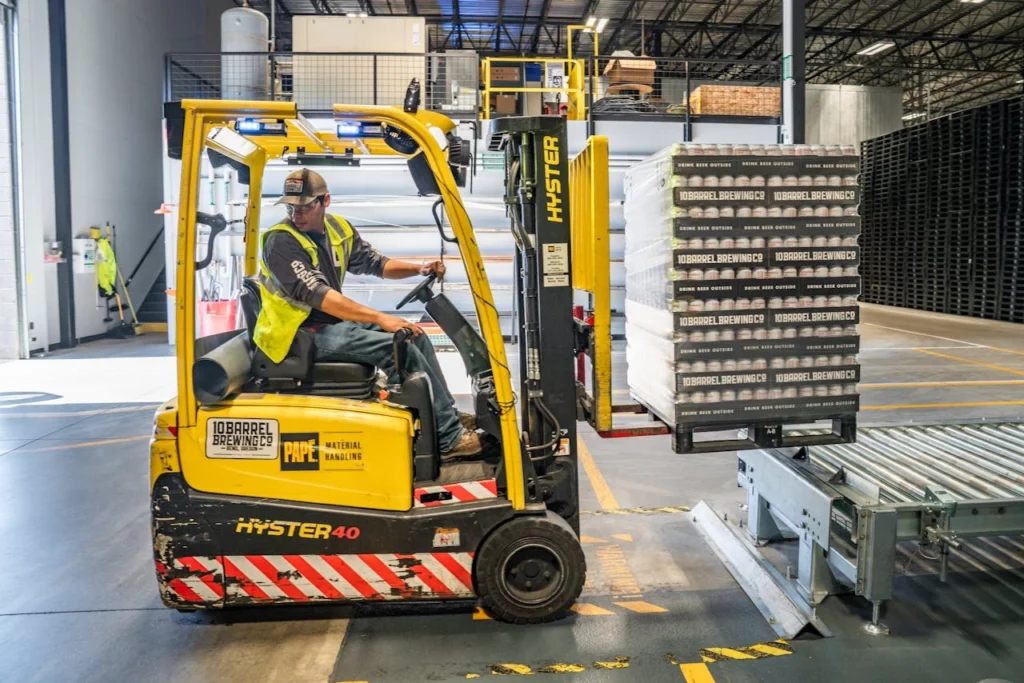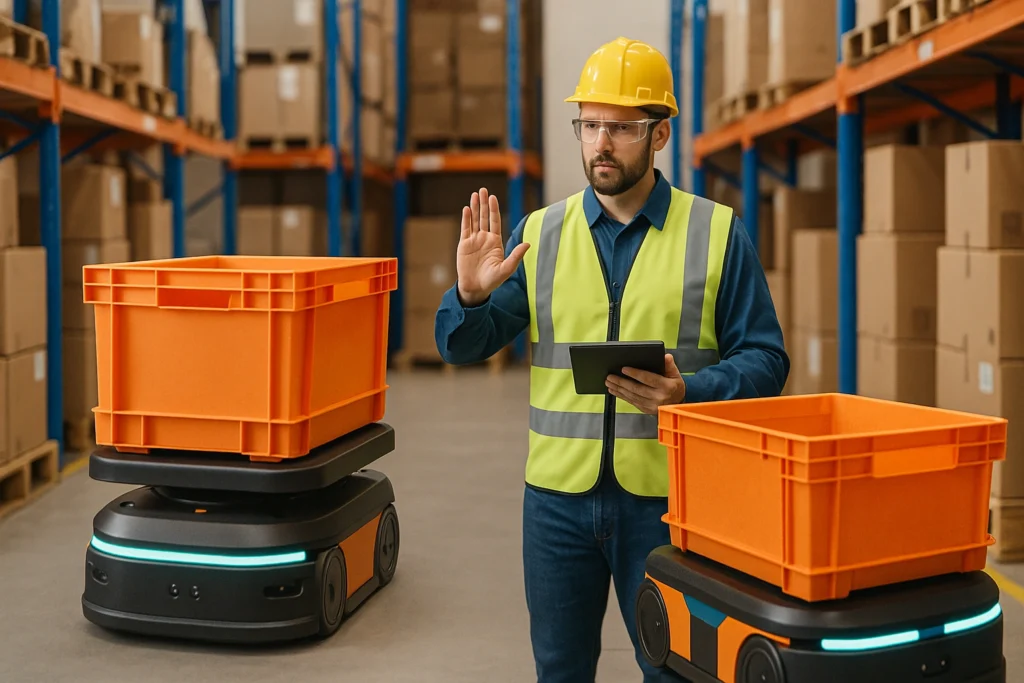Enhancing Safety and Productivity with Warehouse Robotics

The truth is, modern warehouses are stretched thin. The relentless growth of online shopping, the pressure of instant gratification (like same-day delivery), and constant supply chain interruptions have made manual labor simply unsustainable. Warehouse operators urgently need AI solutions to keep up the pace while protecting their people. This is where the power of warehouse robotics safety comes in.
Robotics from sophisticated picking arms to fleet-footed autonomous vehicles are literally redesigning the warehouse floor. Beyond just increasing speed, these machines are a massive boon to safety. They cut down on dangerous incidents, create optimized workflows, and ensure employees can work under better conditions. In this article, let’s explore how robotics in warehouse management are the key to balancing high-stakes efficiency with essential worker safety.
The Dual Challenge: Speed and Safety
Historically, increasing warehouse operations automation and speed often came at the cost of human safety. Manual material handling is fraught with risks, leading to a high incidence of musculoskeletal disorders (MSDs), slips, trips, and collisions. On the other hand, traditional fixed automation systems, while fast, often required extensive safety fencing, which limited human access and flexibility.
The new generation of warehouse robotics solves this dual challenge by integrating sophisticated safety technology directly into the core design and operation of the machines. The goal is to maximize robotic picker productivity while achieving zero human-robot incidents. This is accomplished through three integrated technological pillars:
Sensing and Perception: Giving robots the ability to “see” and “understand” their environment.
AI-Driven Decision Making: Allowing robots to react safely to unforeseen events in real-time.
Physical Design for Safety: Engineering the hardware to be inherently safe.
Also See: The Future of Automated Warehouse Robots: Revolutionizing Logistics
How Robotics Improves Warehouse Safety

1. Reducing Hazardous Manual Labor
Heavy lifting and repetitive bending are leading causes of warehouse injuries. Safe robotic picking systems handle these physically demanding tasks, protecting workers from strain and fatigue.
2. Automated Collision Avoidance
Modern inventory robotics are equipped with sensors, cameras, and AI-driven obstacle detection. They can navigate busy aisles without bumping into racks, forklifts, or employees.
3. Consistent Compliance
Unlike humans, robots don’t skip safety protocols. With pre-programmed rules and robotics safety technology, they consistently follow safe speeds, routes, and procedures.
4. Hazard Detection
Some robots are equipped with thermal or environmental sensors. These tools help identify spills, overheating equipment, or unsafe conditions before they become serious hazards.
How Robotics Improves Productivity
1. Faster Picking and Packing
Robotic picker productivity far outpaces manual workers for repetitive tasks. Robots can sort, pack, and move goods with minimal downtime.
2. 24/7 Operation
Unlike humans, robots don’t tire. Automated systems keep warehouses running around the clock, maximizing output without overtime costs.
3. Optimized Inventory Management
Warehouse management robotics track stock levels in real time. This prevents out-of-stock errors, improves replenishment accuracy, and saves time spent on manual counts.
4. Reduced Errors
Human errors in order picking create costly returns. With safe robotic picking systems, error rates drop significantly, improving both efficiency and customer satisfaction.
AI Warehouse Solutions: Smarter, Safer Systems
AI is the brain behind modern warehouse robotics. By combining robotics hardware with intelligent software, warehouses achieve new levels of safety and performance.
Predictive Analytics: AI predicts equipment maintenance needs, reducing unexpected downtime.
Smart Routing: Algorithms guide robots along the safest, most efficient paths.
Adaptive Learning: Robots learn from past actions to improve accuracy in picking and navigation.
Human Collaboration: AI ensures robots adjust movements to avoid risks when humans are nearby.
Real-World Applications of Robotics in Warehouses
Automated Guided Vehicles (AGVs)
AGVs transport pallets and goods across the warehouse floor safely, eliminating forklift accidents.
Robotic Picking Arms
With advanced vision systems, robotic arms handle fragile or oddly shaped items, reducing product damage.
Inventory Drones
Drones fly through aisles to scan inventory at lightning speed, ensuring accurate data with minimal disruption.
Collaborative Robots (Cobots)
Cobots work alongside humans, assisting in packing, picking, or quality checks while ensuring worker safety.
Also See: Understanding the Science of Robotic Warehouse Navigation
The Business Benefits of Robotics Adoption

Some of the benefits of adopting robotics in warehouse include:
Lower Operational Costs: Fewer accidents mean lower insurance premiums and compensation claims.
Higher Employee Satisfaction: Workers focus on safer, less strenuous tasks.
Scalability: As demand grows, robotic fleets scale without compromising safety.
Improved Reputation: Companies known for safety and efficiency attract better talent and more customers.
Challenges to Consider
While the benefits are strong, implementing warehouse operations automation also comes with challenges:
- High Initial Investment: Robotics hardware and software require significant upfront capital.
- Integration Complexity: Systems must align with existing warehouse management software.
- Maintenance Needs: Robots require ongoing care to remain safe and efficient.
- Workforce Training: Employees must adapt to new roles alongside robotic systems.
The Future of Warehouse Robotics Safety
The future of warehouse automation technology lies in collaboration, intelligence, and scalability. Expect to see:
- Stronger Human-Robot Partnerships: Cobots designed to enhance human capabilities.
- More Autonomous Systems: Fully AI-driven robots managing complex picking and routing.
- Advanced Safety Standards: Global guidelines for robot picking safety and interaction.
- Integrated Smart Warehouses: A network where robotics, IoT, and AI create seamless operations.
FAQ: Warehouse Robotics Safety
How do warehouse robots improve safety?
They reduce heavy lifting, avoid collisions, and detect hazards, lowering the risk of workplace accidents.
Can robots completely replace human workers?
Not entirely. Robots handle repetitive and dangerous tasks, while humans focus on problem-solving and oversight.
Are warehouse robots expensive to maintain?
Maintenance is required, but predictive AI tools reduce unexpected failures, keeping costs manageable.
How does robotics impact employee satisfaction?
By removing physically demanding tasks, employees feel safer and more valued in their roles.
What industries benefit most from warehouse robotics?
E-commerce, retail, pharmaceuticals, and food logistics see the greatest benefits.
Conclusion
Warehouse robotics are essential for businesses balancing safety with productivity. From robotics safety technology that prevents accidents to AI warehouse solutions that optimize operations, these tools protect workers and strengthen efficiency.
By adopting warehouse operations automation, companies not only future-proof their logistics but also create safer, more productive environments for everyone involved.
